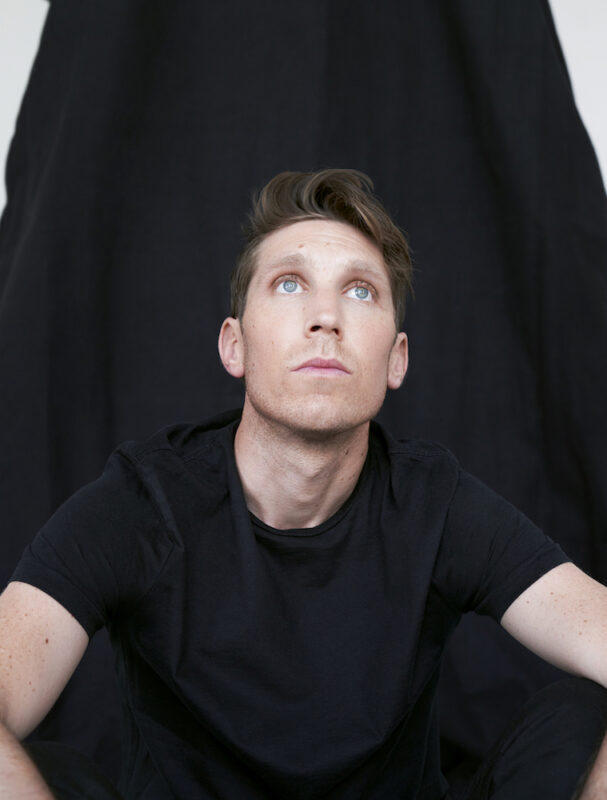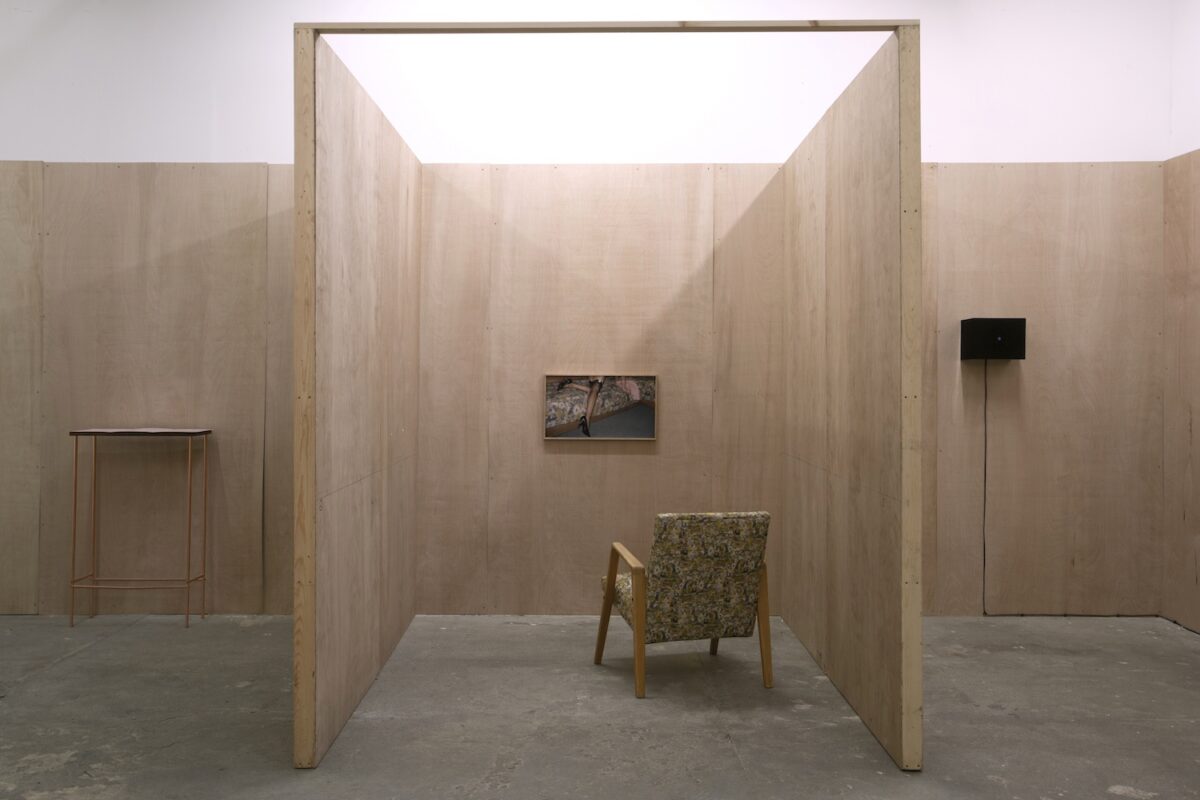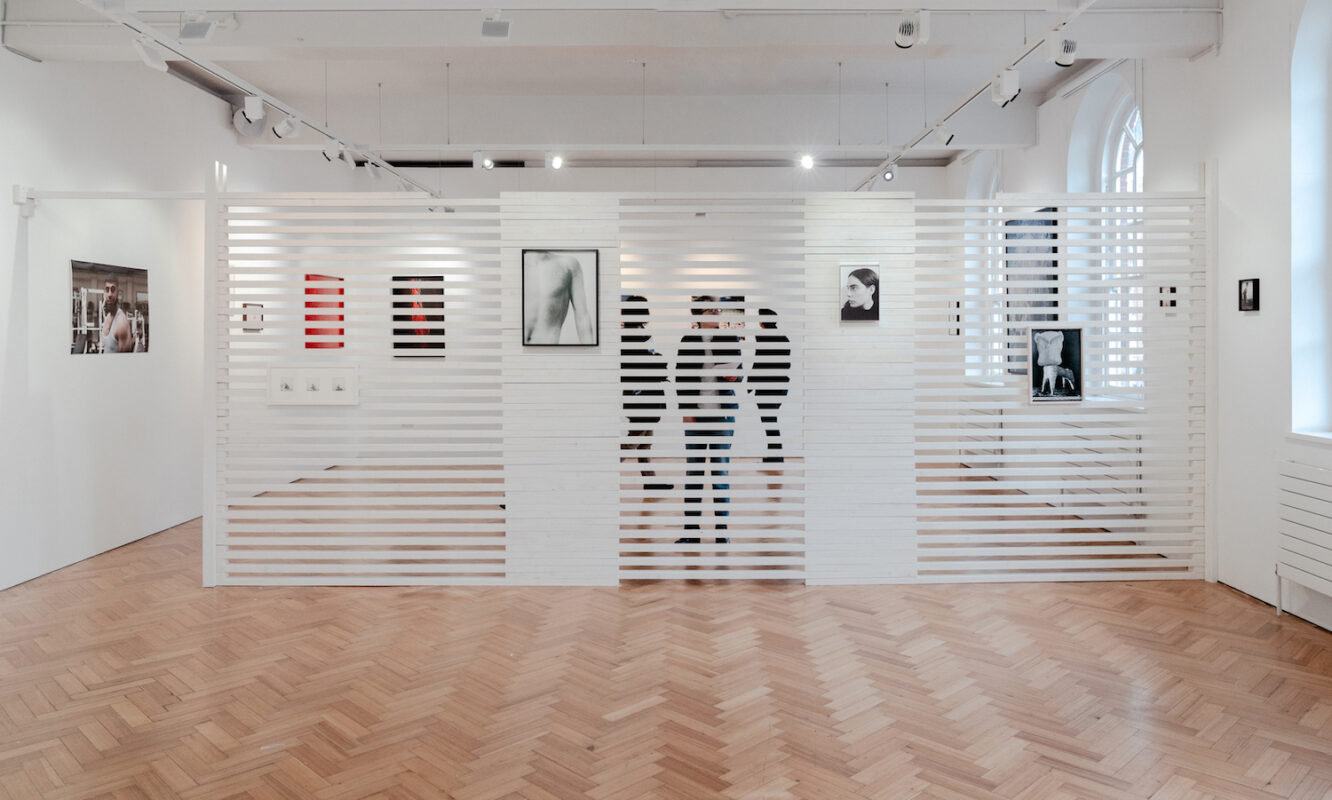Curator Conversations #13
Tom Lovelace
Tom Lovelace is an artist, curator and lecturer based in London. Recent curatorial projects include With Monochrome Eyes (2020), Rehearsing the Real (2019), Concealer (2018) and At Home She’s a Tourist (2017). As an artist Lovelace works across photography, sculpture and performance. He studied Photography at the Arts University Bournemouth before reading Art History, Curatorial Studies and Museology at Goldsmiths College, University of London. He teaches at the Royal College of Art, London South Bank University and Glasgow School of Art.
What is it that attracts you to the exhibition form?
The exhibition as a space and a stage opens possibilities to create live, meaningful encounters between artwork and audience. It is the exhibitions that allow visitors to step into and onto this stage that interest me; inviting one to roam and to engage. Here, wonderful friction can happen.
Photography, once disseminated into the world can become controlled. The viewer dictates, whether that be flicking through the pages of a book or meandering screens. My formative relationship with photography took place somewhere between intimate encounters with photographs within photobooks and through exhibition experience. The former allowed me to return, time and time again, to the same image or page as a way of understanding and unpicking photographic history. The latter brought surprise, excitement, unexpected encounters and fulfilled my desire for materiality.
What does it mean to be a curator in an age of image and information excess?
It means that I feel ever compelled to create visceral and meaningful encounters with contemporary photography. The digital as a phenomenon has broken and expanded conventional forms of territory regarding looking, disseminating and engaging. What this time of image and information excess has provided is new contact points and access to artworks and artists, which did not previously exist. The challenge is to attempt to make sense of this. There are some exciting examples currently of artists and students playing with and testing these territories, which have expanded further during the Covid-19 lockdown, as physical spaces retract, across most of the globe.
In terms of curatorial research, it is important to dig deeper than the slick surface of social media platforms. For perhaps younger, emerging artists, graduation exhibitions continue to provide unique insights into an artist’s practice, endeavours and sensibilities.
What is the most invaluable skill required for a curator?
To be flexible and collaborative without compromising the core concept and initial vision that started off the process. I have found that most invested artists will surprise you or test that initial idea that you thought held clarity. And so the challenge is to embrace the creativity from artists whilst ensuring the idea, message and in turn exhibition does not get pulled apart. Close to this, would be the ability to stay calm within the midst of exhibition chaos. There will be moments, either on the day of public opening, or with weeks to go, when the walls are seemingly falling in. Everyone will have an opinion, but perhaps not always with the group or larger outcome in mind. The ability to think with incisiveness amongst the noise will be vital.
What was your route into curating?
I studied art history and curating at Goldsmiths College in London. I then spent the best part of a decade trying to build momentum within my own practice of making, whilst staging exhibitions in my flat in East London and working on the Late at Tate programme at Tate Britain. In retrospect, these two complimented each other well. One was small scale, shaped by solo ideas and DIY. The other was relatively huge, complex and collaborative. Late at Tate presented monthly happenings encompassing performance, film, music, installation and a talks programme. I worked under the wing of Adrian Shaw, an inspiration in the ways in which he operated as a catalyst for collaboration and creativity. Two to three months of work and ideas were packed into one evening. The Late at Tate programme felt important and malleable in structure. It provided refreshing counterpoints to the larger scale, more long-term exhibitions that are characteristic within large institutions. I worked with countless artists and curators during that period and it allowed me to decide how I did and significantly did not want to work and behave.
I started to develop my own exhibition programme five years ago as my desires to make and respond began to break out and beyond my own art practice. I am indebted to Peckham 24, the photography festival in South London, for providing me with a platform to experiment, develop and stage what I hope have been interesting and meaningful exhibitions over recent years.
What is the most memorable exhibition that you’ve visited?
Of Mice and Men, a collection of exhibitions, which formed the 4th Berlin Art Biennale, held in 2006. I went to Berlin alone to see the Biennale, which was jointly curated by Maurizio Catalan, Massimiliano Gioni and Ali Subotnik. Two days of wandering through converted buildings on Augustrasse, simply spending uninterrupted time with artwork. It was here that I first encountered the work of so many powerful artworks the first time including Nathalie Djurbgerg’s disturbing yet strangely enchanting animations, Tino Sehgal’s Kiss, Michael Schmidt’s photographs, which were displayed in the same space as works in other media by Thomas Schutte, Susan Philipsz, Michael Borremans and Anri Sala. So many memorable displays and moments. I remember there being so many people, however I also remember it being very quiet, a collective sense of hush, as visitors negotiated the exhibitions housed in abandoned schools, factories and apartments, in which the harrowing local history felt present. Those exhibitions and in particular the dynamic created between the architecture and art left me even more certain that I wanted to dedicate my time and contribute to the artworld.
What constitutes curatorial responsibility in the context within which you work?
Providing platforms for an emerging generation of artists to display their work. Further, staging exhibitions which are intentionally structured by a diversity of career stage and status. I don’t care whether an artist has been making work for 30 years or if they have just stepped out of art school. If the artwork is brilliant and relevant to the project then it needs to be seen and heard.
Also, striving for inclusivity and shutting down exclusivity within the culturally lopsided field of lens based media. And to critically analyse one’s own position and identity within this landscape. As a white man, it is crucial to engage with the problem of cultural diversity, or lack of it, and to consider how the territories of the art world can and should be used to provide important spaces for the under-represented.
What is the one myth that you would like to dispel around being a curator?
That curators swan around, basking in an easy life. The responsibilities and work required to get an exhibition up and running can be huge, especially for those curators working within museums and publicly funded galleries. An incredible amount of dedication and work goes on behind the scenes in terms of research, relationships and liaison with artists, health and safety and untangling logistical conundrums, etc. The admin involved is often overwhelming.
What advice would you give to aspiring curators?
Invest as much time as possible visiting exhibitions, on all levels – museum, gallery, satellite programmes, displays in homes, derelict buildings, cafes (my first exhibition was in a cafe) and students shows. Probably in the reverse order. Get excited and be inspired, but equally and significantly, do not be restricted by these encounters and influence. Think outside of the box. What have you not seen and what have you not experienced?
I have intentionally worked with a DIY methodology, one does not need a large budget and a beautiful expansive white cube for an exhibition to manifest and become real. So start early and perhaps low fi. Make it happen. Lastly, look within and collaborate with the artists, writers and spaces that form your peer group. Consider the possibilities that could emerge whilst working in the shadows of the mainstream.♦
Further interviews in the Curator Conversations series can be read here.
Click here to order your copy of the book
—
Curator Conversations is part of a collaborative set of activities on photography curation and scholarship initiated by Tim Clark (1000 Words and The Institute of Photography, Falmouth University), Christopher Stewart (London College of Communication, University of the Arts London) and Esther Teichmann (Royal College of Art) that has included the symposium, Encounters: Photography and Curation, in 2018 and a ten week course, Photography and Curation, hosted by The Photographers’ Gallery, London in 2018-19.
Images:
1-Tom Lovelace © James Pearson-Howes
2-Installation view of At Home She’s a Tourist: Emma Bäcklund, Mette Bersang, Julie Boserup, Jonny Briggs, Julie Cockburn, Gabby Laurent & Dominic Bell, Louise Oates, Eva Stenram, Clare Strand, Dominic Till, Tereza Zelenkova, 2018.
3-Installation view of With Monochrome Eyes: Eleonor Agostini, Elena Helfrecht, Mahtab Hussain, Ben Jeffery, Äsa Johannesson, Kalpesh Lathigra, Ryan L. Moule, Martin Parr, Giovanna Petrocchi, Silvia Rosi, Martin Seeds, Senta Simond, Deo Suveera, Esther Teichmann, Paloma Tendero, Simon Terril, 2020. © Elene Helfrecht



